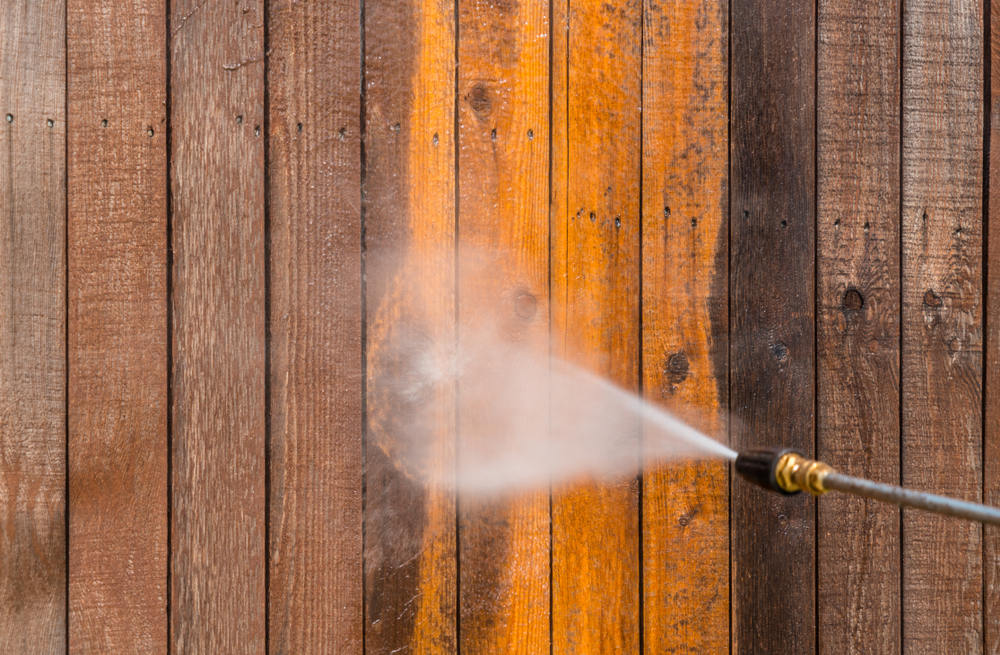As a top local fence supplier, we at Utah Fence Warehouse take pride in our versatile fencing services. We’ll perform full fence installations for you if you require them, but are also happy to simply provide materials for your own DIY installation if you prefer this route – and we’re always available to offer basic expertise and tips on the care or maintenance of any of our fence supplies, from wood fence materials to vinyl, chain link, wrought iron and others.
One of the most common questions we get regarding our fences is the proper method for cleaning them. While there are a few specific parts of this process, one of the broader choices you’ll be making is whether to use a power washer (or pressure washer) for cleaning a given fence, or whether you’ll be doing so by hand. Let’s go over both methods and some pros and cons of each, plus a note specific to wood fence types.

Power Washing (Pressure Washing)
For those cleaning larger swaths of fencing and whose fence materials are relatively new and in good shape, using a power washer – also often called a pressure washer – is usually the ideal approach. This method allows you to clean larger areas much faster than handwashing, and is usually effective for a variety of fencing materials.
Now, there are some important directives to follow if you go this route. For one, if you don’t own your own power washer, you will have to rent one – ensure it’s of high quality and has a strong spray. In addition, we recommend laying plastic sheet around your fence to protect plants or other susceptible elements. Begin with a low pressure setting and work your way up based on the amounts of dirt or grime present on the fence.
Handwashing
For older fences, especially wooden ones, the handwashing approach might be the better way to go. This is especially true if the fence area is relatively small.
This process may take a bit longer than power washing, but will not risk any damage to older materials. It involves spraying the fence with a hose to soften dirt, then scrubbing with a brush and hosing it off with a wood cleaner. Then you spray it down one more time to ensure the entire fence is clean and rinsed off.
Staining and Sealing
One more important tip for wood fences: After washing of any kind, but especially power washing, it’s vital to re-apply stain and seal to your fence. This is because washing may remove the existing seal that was present, particularly if you were using a strong stream of water from a power washer.
For more on whether to use a power washer or handwash your fence, or for information on any of our fence materials, speak to the staff at Utah Fence Warehouse today.

